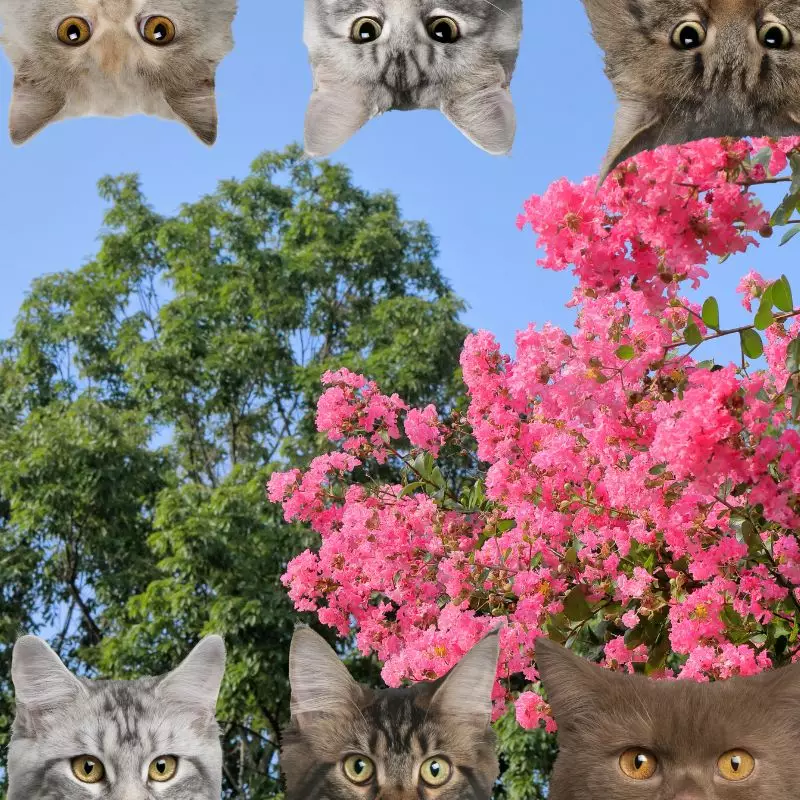Crepe Myrtles are not inherently toxic to cats. However, as with many plants, it’s essential to be cautious and aware of individual reactions your feline might exhibit.
This article has been crafted in collaboration with a team of experienced DVMs (doctors of veterinary medicine). Their invaluable contributions enable us to deliver accurate and current information on the potential risks linked with various plants, specifically Crepe Myrtles, in relation to cats. For added assurance, our research extends to high-authority websites like the ASPCA and PetMD to ensure comprehensive coverage of every plant in question.
Can Cats Eat Crepe Myrtle?

While ASPCA has named crepe myrtle a safe plant for felines, it is still best to monitor your cat if he or she is eating this plant.
Any kind of plant is not suitable for a cat’s digestive system. As carnivores, their bodies are created for a meat-based diet, thus, they lack the proper enzymes to help in digesting plant matter.
You must also remember that fertilizers and pesticides used on plants can affect your cat’s health. If they happen to eat a portion of a plant with toxic chemical residues, this can cause them to suffer from poisoning and experience life-threatening symptoms.
What is Crepe Myrtle?

Crepe myrtle is also commonly called crape myrtle and crepe flower. It is botanically known as Lagerstroemia indica. This flowering plant from the Lythraceae family is endemic to the Indian Subcontinent and to Southeast Asia as well.
Each year, the crepe myrtle tree sheds its thin, smooth, pinkish-gray, and speckled branches. Crepe myrtle leaves drop in the winter following their stunning color show. Early in the spring, bare branches re-leaf. Its leaves are tiny, smooth-edged, round or oval-shaped, and dark green. In fall, they turn yellow, orange, and red.
Crepe myrtle blooms are white, pink, mauve, purple, or carmine and grow in panicles up to 9 cm long on various trees. The blooms are followed by 6-capsuled, brown dehiscent fruits.
In mild-winter areas of the United States, the crepe myrtle is a significant flowering plant. It is widely seen in parks, walkways, highway medians, and parking lots because of its low maintenance requirements.
Crepe myrtle has received the Royal Horticultural Society’s Award of Garden Merit in the United Kingdom.
Keeping Cats Away From Crepe Myrtle

You should not be concerned if there are many crepe myrtles around your area. However, you should still train your cat to stay away from plants.
You may restrict their access outdoors to avoid exposure to outdoor plants. Keeping them well-nourished and stimulated indoors will lessen the chances of them taking a bite of your plants. Bored and hungry cats are usually keener on eating plants.
Plants to Avoid For Your Cats
If you are a cat owner and unsure if the plants growing in your yard are harmful to your cats, check out this list of toxic plants for cats. You can also check our list of non-toxic plants for cats.





